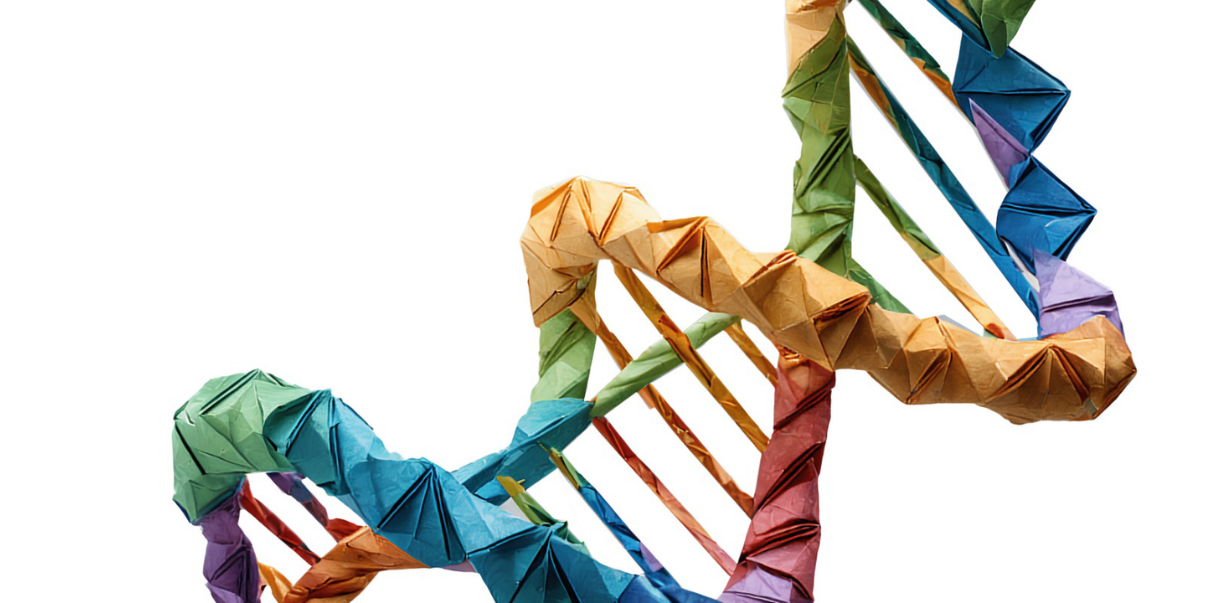
Innovative Nanomaterials with DNA Origami refers to the exciting field where DNA nanotechnology is used to create highly precise and functional structures that can be applied to a wide range of industries, from medicine to electronics and materials science. DNA origami is a technique that involves folding a single-stranded DNA molecule into a desired shape or structure, which can be used as a scaffold for the assembly of functional nanomaterials. Here’s a breakdown of the topic:
Overview of DNA Origami in Nanomaterials
DNA Origami is a technique where long strands of DNA are folded into specific shapes and structures using shorter “staple” strands that bind to the target DNA at defined locations. This creates a wide variety of 2D and 3D structures, which can serve as scaffolds for assembling functional nanomaterials. These materials exhibit unique properties that can be used for drug delivery, biosensing, and energy storage, among other applications.
Key Concepts in DNA Origami-Based Nanomaterials
- DNA as a Building Material:
DNA, the molecule that carries genetic information, is highly programmable and can be designed to fold into specific shapes. Through the design of DNA origami, scientists can create complex nanoscale structures, which are stable and can be further functionalized with a variety of materials such as nanoparticles, proteins, or fluorescent molecules. - Nanomaterial Functionalization:
DNA origami structures can be functionalized with metallic nanoparticles, carbon nanotubes, or quantum dots, making them ideal for a variety of applications. By attaching functional groups to the DNA scaffold, scientists can create materials that interact with specific targets, such as cells, proteins, or even environmental toxins. - Precision and Control:
One of the key advantages of DNA origami is its ability to create highly precise nanostructures. The nanoscale dimensions and specific folding of DNA molecules allow for the construction of complex architectures with atomic-level precision. This enables a high level of control over material properties, such as shape, size, and functional groups. - Self-Assembly:
DNA origami structures can be designed to self-assemble into larger, more complex structures without the need for external input. This self-assembly process is highly efficient and is one of the reasons why DNA-based materials are considered highly promising for scalable manufacturing processes.
Applications of DNA Origami Nanomaterials
- Drug Delivery Systems:
DNA origami structures can be engineered to carry drugs and release them at targeted sites in the body. By attaching drugs to specific locations on the DNA scaffold, researchers can ensure controlled and targeted delivery, minimizing side effects and improving therapeutic efficacy. - Biosensors:
DNA origami can be used to create biosensors that detect specific biomolecules or environmental conditions. For example, DNA nanostructures can be designed to bind to a specific protein or DNA sequence, and this binding event can be detected through changes in the structure or optical properties of the nanomaterial. - Nanoelectronics:
The precise and programmable nature of DNA origami makes it an attractive option for creating components in nanoelectronics. DNA structures can be used as templates for assembling conductive materials, or even as scaffolds for creating molecular-scale circuits or sensors. - Environmental Monitoring and Remediation:
DNA-based nanomaterials can be used in the detection and removal of pollutants from the environment. The selectivity and versatility of DNA origami structures make them ideal for binding to specific toxins or pollutants, enabling their detection or removal from contaminated water or soil. - Synthetic Biology:
DNA origami is being explored in synthetic biology, where it can be used to create artificial cells, molecular machines, or other bio-inspired systems. These systems could be used in a wide variety of applications, from medical diagnostics to environmental sensing.
Challenges and Future Directions
- Scalability and Cost:
Although DNA origami shows great promise in lab settings, scaling up production for practical applications remains a challenge. DNA synthesis and folding can be time-consuming and expensive, which may limit the commercial viability of DNA-based nanomaterials. - Stability:
DNA origami structures are generally stable under controlled conditions, but their stability can be affected by environmental factors such as temperature, pH, and ionic strength. Researchers are working on improving the stability of DNA origami structures to make them more practical for real-world applications. - Integration with Other Materials:
Another challenge lies in integrating DNA origami with other materials and technologies. While DNA can serve as a scaffold, combining it with inorganic materials like metals or semiconductors in a way that preserves its unique properties and functionality is still an area of active research. - Regulatory and Ethical Concerns:
As with many nanomaterials, the use of DNA-based technologies in medical or environmental applications raises potential regulatory and ethical issues. Researchers must ensure that these materials are safe, effective, and do not pose any risks to human health or the environment.
Conclusion
Innovative Nanomaterials with DNA Origami represent a cutting-edge area of research with the potential to revolutionize many fields, including medicine, electronics, and environmental science. The unique ability to create highly customizable and functional nanostructures from DNA offers unprecedented control and precision at the nanoscale. Despite challenges such as scalability and stability, ongoing research is bringing DNA origami closer to practical, real-world applications.
As advancements in DNA origami and nanotechnology continue, we are likely to see significant breakthroughs in areas like targeted drug delivery, environmental monitoring, and even advanced nanodevices. These innovations could play a critical role in addressing some of the most pressing global challenges, from healthcare to sustainable energy.
Would you like to know more about specific applications or research in this area?
